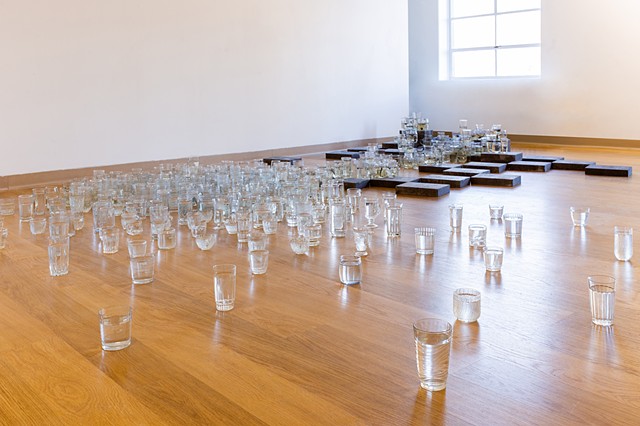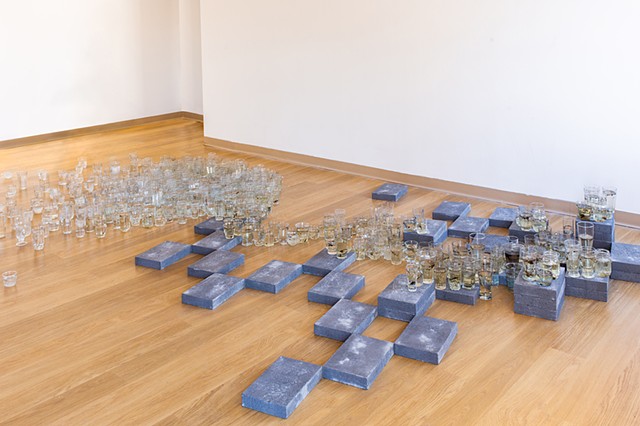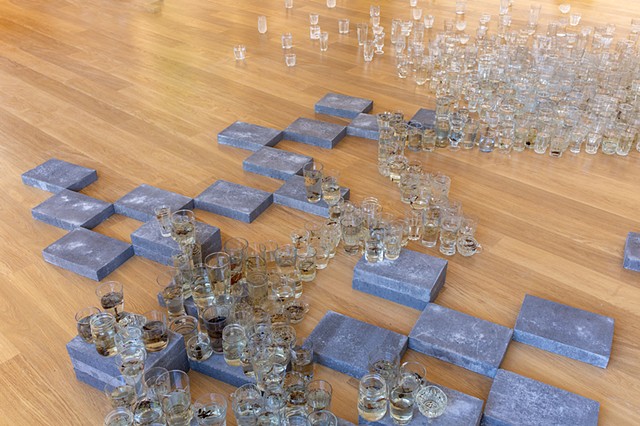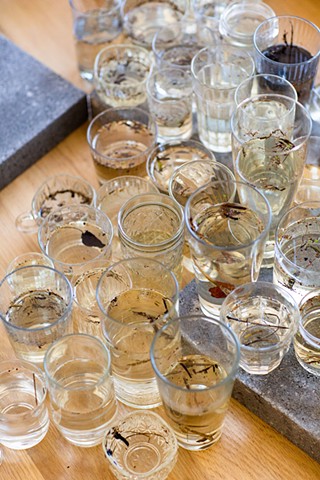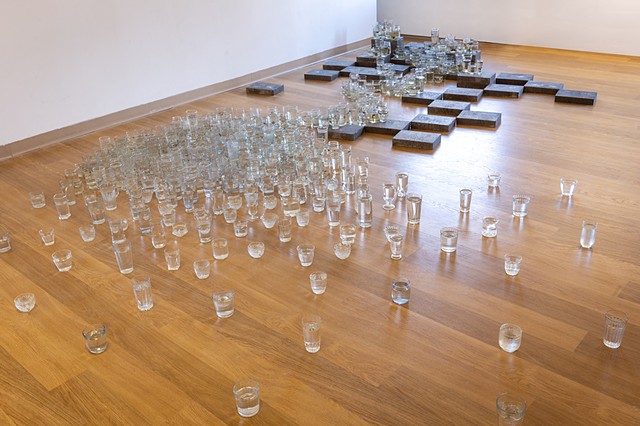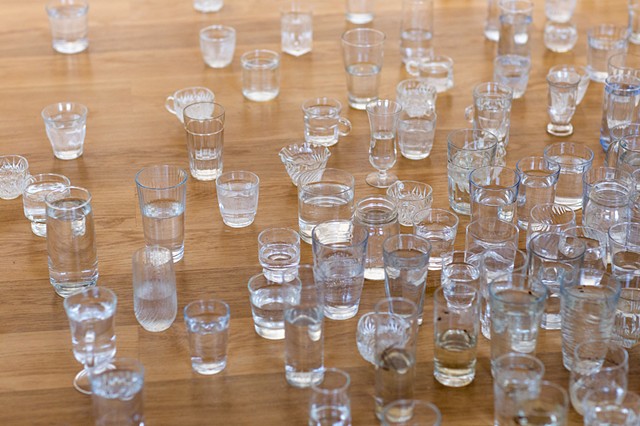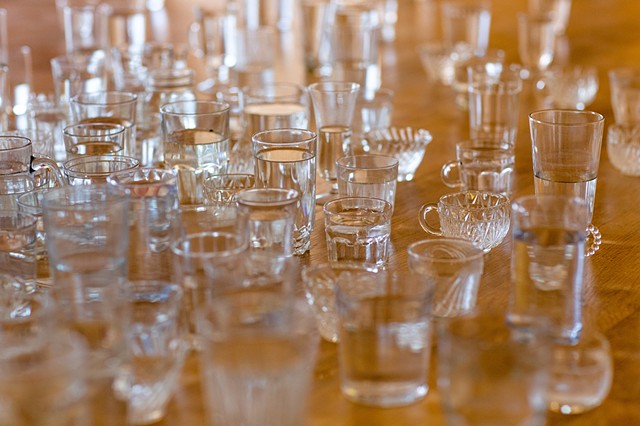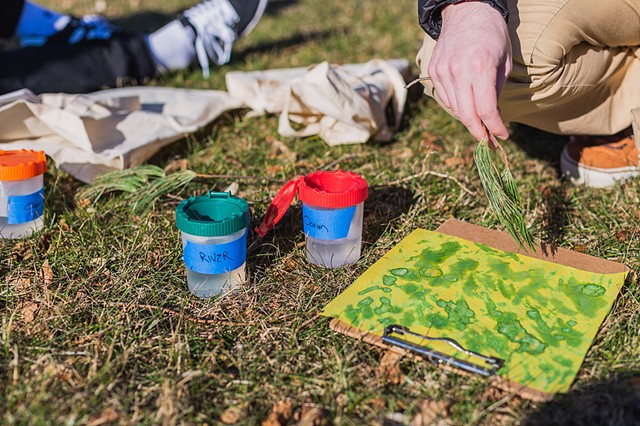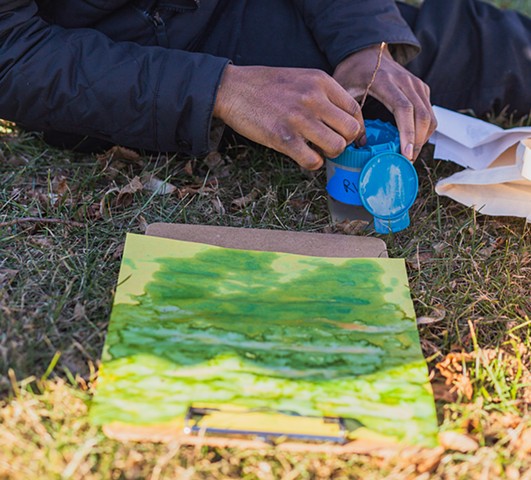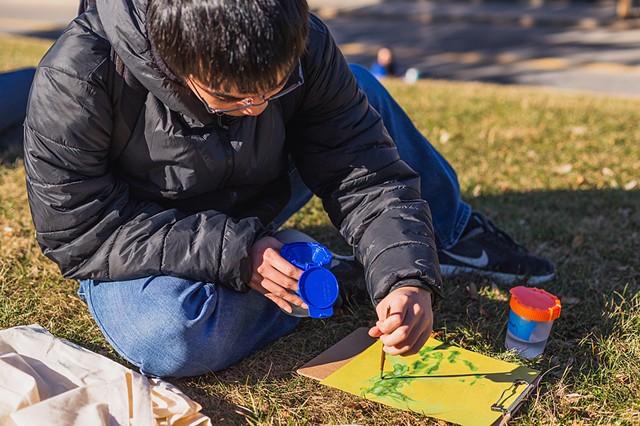The Mouth
The Mouth: A Merrimack River Project
A site specific work commissioned for Local Ecologies
Merrimack River water, Atlantic Ocean water, pH paper, used water glasses, cement pavers
Evelyn Rydz’s newly commissioned project explores connections between our own bodies and bodies of water—specifically, our embodied connections to the Merrimack River. The mouth is a portal through which the river’s water flows into our bodies. At the same time, Rydz draws attention to the mouth of river, where the river flows into the Atlantic and enters global currents of ocean water. The river sustains as a source of drinking water, and the river also receives our waste. With the river, our bodies and the landscape merge.
The drinking glasses that Rydz has placed on the gallery floor trace the contours of the Merrimack River from the Massachusetts/New Hampshire border to Newburyport where it flows into the Atlantic Ocean. This accumulation of glasses, acquired from communities in proximity to the river, reminds us that the river is the source of drinking water for 600,000 residents of the Merrimack Valley.
The Merrimack River, a prominent topographic feature of the UMass Lowell campus, has received large quantities of toxic runoff since it powered the industrial revolution in the 19th century. Thoreau lamented the loss of fishes caused by the Lowell factories, and serious pollution persists today, including highly toxic chemicals known as PFAS along with millions of gallons of raw sewage that overflows into the Merrimack every year from water treatment plants after heavy rains.
Rydz invites viewers to participate in her installation by making a painting with water gathered from the Merrimack River applied to panels of pH paper. These paintings create visual records of the relative acid or alkaline properties of the river water. Through this process participants may gain a more specific, embodied relationship to the river on which many human and non-human lives depend.
- Kirsten Swenson, Art History, UMass Lowell
